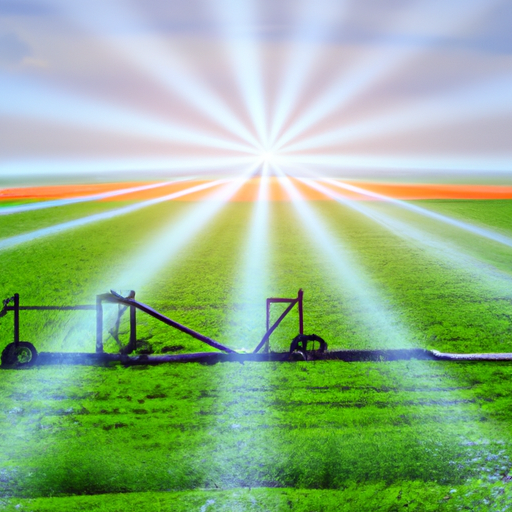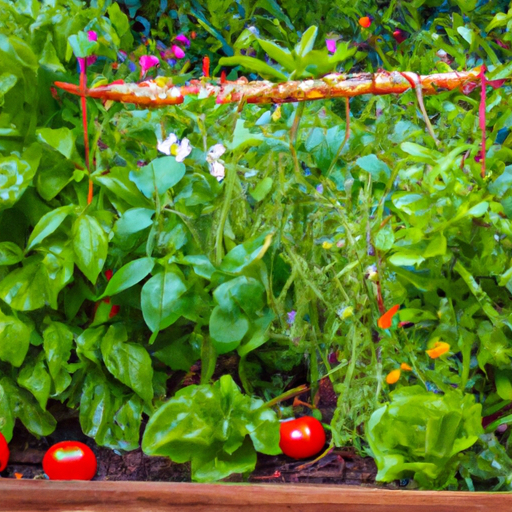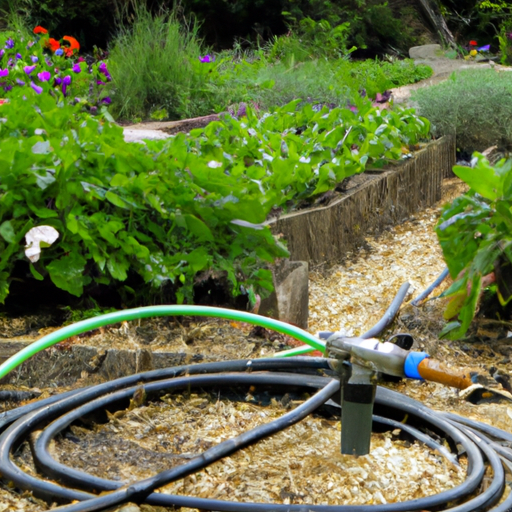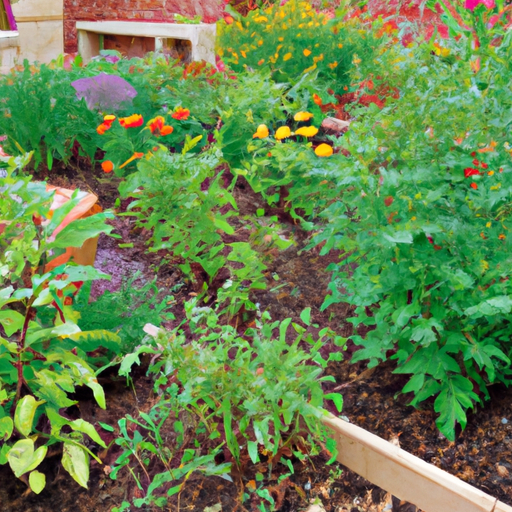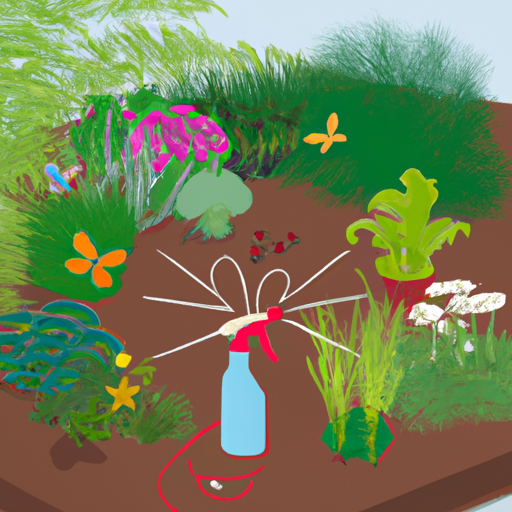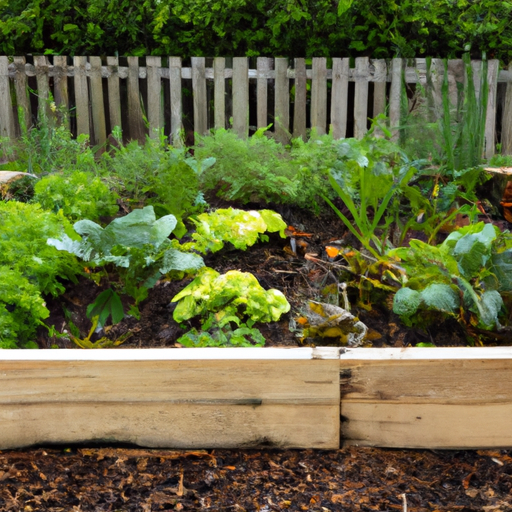Solar-powered irrigation systems are revolutionizing the world of organic farming. As a Master Gardener, I have seen firsthand how these systems can increase crop yields while also reducing labor costs and promoting sustainable practices.
By harnessing the power of the sun, farmers no longer need to rely on traditional methods that require electricity or fuel. Solar panels collect energy during daylight hours and store it in batteries for use later when water is needed most. This means farmers can irrigate their crops even in remote areas without access to electrical grids or fossil fuels.
Plus, solar-powered systems are environmentally friendly because they do not produce harmful emissions like carbon dioxide or other pollutants. In this article, we will explore why solar-powered irrigation systems are the future of organic farming and how they can benefit both farmers and consumers alike.
Increased Crop Yields
As a Master Gardener, it is clear to me that water management and irrigation efficiency are crucial components of successful organic farming.
With solar-powered irrigation systems, farmers can optimize their use of water resources by harnessing the power of the sun to irrigate crops efficiently.
This leads to increased crop yields, which in turn has a positive economic impact on farmers while also boosting marketability for consumers who value sustainably grown produce.
By utilizing solar energy for irrigation purposes, organic farmers can reduce their reliance on fossil fuels and minimize their carbon footprint, all while reaping the benefits of higher crop yields.
Investing in solar-powered irrigation systems is not only beneficial for individual farms but also contributes to a more sustainable agricultural industry overall.
Reduced Labor Costs
As a Master Gardener, I can confidently say that solar-powered irrigation systems have revolutionized the way we approach organic farming.
Not only do they significantly reduce labor costs, but they also offer efficiency optimization and manpower reduction.
With these innovative systems in place, farmers can spend less time manually watering crops and more time focusing on other essential tasks such as pest control and soil management.
The reduced reliance on human labor means that there is less room for error, ensuring that every plant receives the precise amount of water it needs to thrive.
In addition to decreasing labor expenses, solar-powered irrigation systems are also environmentally friendly, utilizing renewable energy sources instead of relying on fossil fuels or electricity from the grid.
By embracing this technology, we can create a sustainable future for agriculture while reducing our impact on the planet.
Sustainability And Environmental Benefits
As Master Gardeners, we are always looking for ways to incorporate eco-friendly practices into our farming methods.
One of the best ways to do this is by using renewable energy sources like solar power.
Solar-powered irrigation systems offer numerous environmental benefits that make them a must-have tool for any organic farmer.
By harnessing the power of the sun, these systems reduce carbon emissions and help combat climate change.
They also conserve water resources by efficiently delivering water directly to plants’ roots without wastage.
Additionally, they eliminate the need for fossil fuels or electricity, making them a sustainable choice in terms of cost as well as environmental impact.
Embracing solar-powered irrigation systems is not just a smart move – it’s an essential step towards creating a more sustainable future for all of us.
Access To Remote Areas
One of the challenges that organic farmers face is accessing remote areas where there may not be readily available access to electricity. This can make it difficult or even impossible for farmers to use traditional irrigation systems, which typically require a reliable power source.
However, solar-powered irrigation systems offer off-grid solutions that allow organic farmers to irrigate their crops without relying on grid-based electricity. The scalability challenges associated with these systems have decreased in recent years as technology has advanced and costs have gone down.
As a result, more and more farmers are turning to solar-powered irrigation as a sustainable way to access water in even the most remote locations. By using renewable energy sources like solar power, organic farmers can reduce their carbon footprint while still producing high-quality crops.
Cost-Effectiveness For Farmers And Consumers
One of the major benefits of solar-powered irrigation systems is their financial feasibility. While traditional farming practices can be expensive due to the use of non-renewable energy sources, solar-powered technologies offer a cost-effective solution that allows farmers to reduce their expenses and increase their profits.
With market demand for organic produce on the rise, it’s important for farmers to find ways to stay competitive without compromising on quality or sustainability. By investing in solar-powered irrigation systems, they can achieve both goals while also reducing their carbon footprint and contributing to a more sustainable future.
To emphasize this point, here are four key reasons why farmers and consumers should consider adopting solar-powered irrigation:
1. Lower operational costs: Solar power is free and readily available, which means farmers don’t have to spend money on fuel or electricity.
2. Increased yield: Reliable access to water through solar-powered irrigation systems can lead to improved crop yields, resulting in higher profits.
3. Reduced environmental impact: Solar power produces no greenhouse gas emissions or air pollutants, making it an eco-friendly option for agriculture.
4. Long-term savings: Investing in solar technology may require an initial investment, but over time it will pay off by providing long-term savings on utility bills and maintenance costs.
Incorporating solar-powered irrigation into organic farming practices not only reduces costs for farmers but also creates a positive impact on the environment and helps meet growing consumer demand for sustainably produced food products – proving that going green doesn’t have to come at a high price tag!
Frequently Asked Questions
What Are The Main Components Of A Solar-Powered Irrigation System?
When considering the implementation of a solar-powered irrigation system, it’s crucial to understand its main components.
Firstly, there is the solar panel that captures and converts sunlight into electricity.
Secondly, a controller manages the flow of water from the source to the crops being irrigated.
Thirdly, there are submersible pumps that push water through pipes towards these crops.
Additionally, batteries store excess energy for use when sunlight is limited or absent.
Other components include sensors that detect soil moisture levels and weather conditions.
In terms of cost analysis, installing a solar-powered irrigation system can be pricey initially but ends up saving money in the long run due to reduced energy costs and improved crop yields.
The installation process involves locating an appropriate site with ample sun exposure and connecting all necessary components correctly while adhering to safety guidelines.
As a Master Gardener, I highly recommend exploring this sustainable solution as we strive towards more efficient and environmentally-friendly agricultural practices.
How Long Does It Take For A Solar-Powered Irrigation System To Pay For Itself?
To determine the economic feasibility of a solar-powered irrigation system, you need to consider its return on investment (ROI) calculation.
This involves assessing how long it will take for the system to pay for itself through savings in energy costs and increased crop yields.
The ROI varies depending on factors like location, crop type, and water usage.
However, with proper planning and installation, a solar-powered irrigation system can provide significant cost savings over time while reducing environmental impact.
As a Master Gardener, I highly recommend considering this option for sustainable farming practices.
What Are The Maintenance Requirements For A Solar-Powered Irrigation System?
To maintain a solar-powered irrigation system, seasonal adjustments and troubleshooting techniques are necessary.
It’s important to regularly check the water pressure, as well as monitor the battery charge levels and replace them when needed.
Additionally, keeping an eye on the solar panels themselves is crucial, ensuring that they stay clean and free of debris or damage.
If any issues arise with the system, it’s best to address them quickly through proper troubleshooting techniques before they become larger problems.
With proper maintenance, these systems can last for many years while providing sustainable irrigation solutions for organic farming operations.
Can A Solar-Powered Irrigation System Be Used In Areas With Limited Sunlight?
Like a plant that adapts to its environment, a solar-powered irrigation system can also adapt to areas with limited sunlight. However, alternative power sources must be considered as the primary challenge for these systems in such areas.
As a Master Gardener, I recommend exploring all feasible options to ensure adequate power supply and efficiency of the system. Factors like battery storage capacity and panel tilt angle should be taken into account.
With proper planning and implementation, even farms located in regions with less sunshine can benefit from the use of solar-powered irrigation systems.
How Does A Solar-Powered Irrigation System Compare To Traditional Irrigation Systems In Terms Of Water Usage And Efficiency?
When it comes to water conservation techniques, solar-powered irrigation systems are a game changer. Compared to traditional irrigation systems, they use significantly less water while still maintaining efficiency.
In terms of cost analysis, the initial investment may seem higher for a solar-powered system, but the long-term savings on water usage and energy costs make it worth it in the end.
As a Master Gardener, I highly recommend considering this innovative solution for any organic farming operation looking to conserve resources and reduce expenses.
Conclusion
In conclusion, solar-powered irrigation systems are the future of organic farming. They consist of a few main components such as solar panels, a pump, and piping system. The initial investment may seem daunting but it pays for itself in just a few years due to the savings on energy costs.
Maintenance requirements are minimal, with occasional checks on the battery and panel connections. Even areas with limited sunlight can benefit from these systems as long as they receive adequate amounts during peak hours.
Compared to traditional irrigation systems, solar-powered ones use less water and are more efficient overall. As Master Gardeners, we know that sustainability is key in ensuring our gardens thrive year after year.
So why not invest in a solar-powered irrigation system? After all, as the saying goes, ‘you reap what you sow.’ By choosing eco-friendly options like this one, we’re setting ourselves up for bountiful harvests while also taking care of the planet.
Let’s embrace this innovative technology and continue to grow healthy produce while reducing our carbon footprint.
